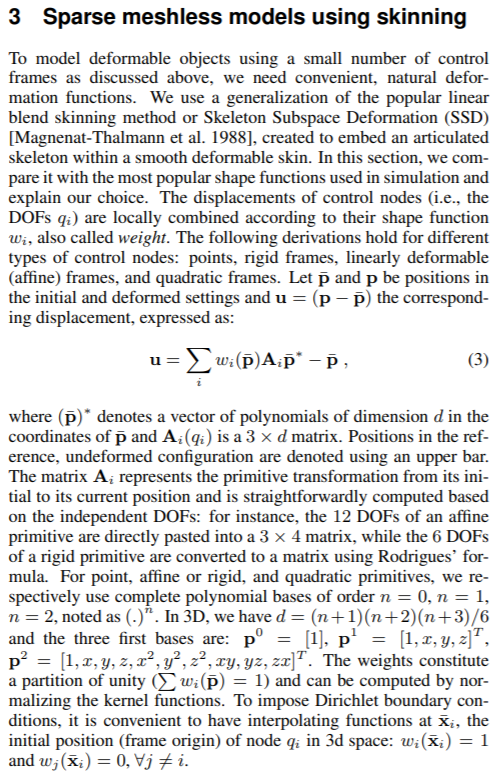This is in reference to this paper: https://hal.inria.fr/file/index/docid/589204/filename/main.pdf
I have several questions but I'll just start with the hopefully easy ones.
The first is in reference to section 3, equation (3) from the paper. Here is that section for reference:

I am focusing on objects composed of affine frames, so 12 DOF per frame.
Question 1: In equation (3), the p bar variable (undeformed position) does not have a subscript on it, which sounds to me like there is only one no matter how many frames there are. However, my understanding of traditional skinning is that there is in fact one "undeformed" position per frame. Should there not be an "i" subscript on p bar? Is this possibly an error in the paper or am I missing something here?
Question 2: With regards to "p bar star" (vector of polynomials), specifically p^1, they have [1, x, y, z]^T. Is the x, y, z here referring to the x,y,z of the undeformed position? Assuming the "A" matrix is a typical 3x4 affine matrix, the translation part usually goes in the last column. If so, why would they have a "1" as the first component of "p bar star"? Shouldn't the 1 be the last component ([x, y, z, 1])?
Thanks,
Chris





